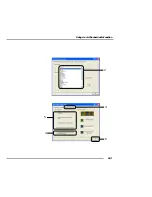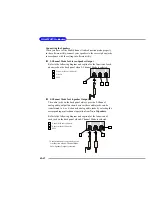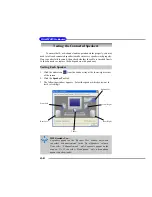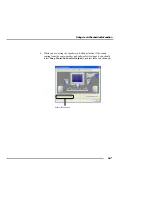
G-3
Glossary
ECC Memory
(Error Correcting Code Memory)
A type of memory that contains special circuitry for testing the accuracy of data and
correcting the errors on the fly.
EEPROM
Acronym for Electrically Erasable Programmable Read-Only Memory. An EEPROM
is a special type of PROM that can be erased by exposing it to an electrical charge. Like
other types of PROM, EEPROM retains its contents even when the power is turned
off. Also like other types of ROM, EEPROM is not as fast as RAM. EEPROM is
similar to flash memory (sometimes called flash EEPROM). The principal difference is
that EEPROM requires data to be written or erased one byte at a time whereas flash
memory allows data to be written or erased in blocks. This makes flash memory faster.
EIDE
Short for Enhanced IDE, a newer version of the IDE mass storage device interface
standard developed by Western Digital Corporation. It supports data rates of between
4 and 16.6 MBps, about three to four times faster than the old IDE standard. In
addition, it can support mass storage devices of up to 8.4 gigabytes, whereas the old
standard was limited to 528 MB. Because of its lower cost, enhanced EIDE has
replaced SCSI in many areas. There are four EIDE modes defined. The most common
is Mode 4, which supports transfer rates of 16.6 MBps. There is also a new mode,
called ATA-3 or Ultra ATA, that supports transfer rates of 33 MBps.
EISA
(Extended Industry Standard Architecture)
EISA is a standard bus (computer interconnection) architecture that extends the ISA
standard to a 32-bit interface. It was developed in part as an open alternative to the
proprietary Micro Channel Architecture (MCA) that IBM introduced in its PS/2
computers. EISA data transfer can reach a peak of 33 megabytes per second.
ESCD
(Extended System Configuration Data)
It is a format for storing information about Plug-and-Play (PnP) devices in the BIOS.
Windows and the BIOS access the ESCD area each time you re-boot your computer
External Cache
Short for Level 2 cache, cache memory that is external to the microprocessor. In
general, L2 cache memory, also called the secondary cache, resides on a separate chip
from the microprocessor chip. Although, more and more microprocessors are including
L2 caches into their architectures.




































